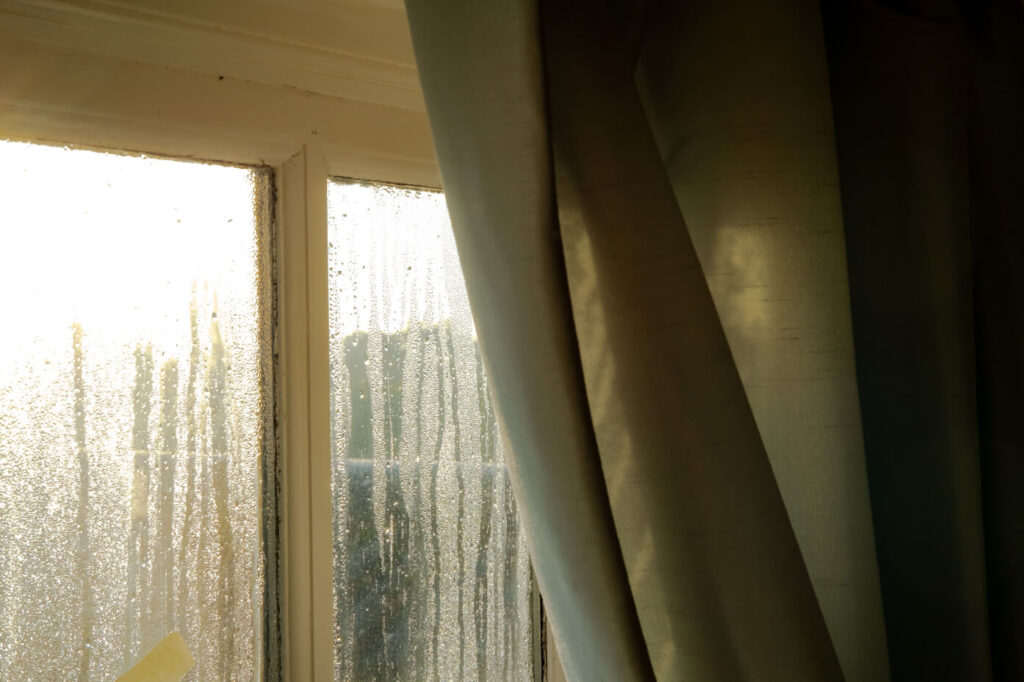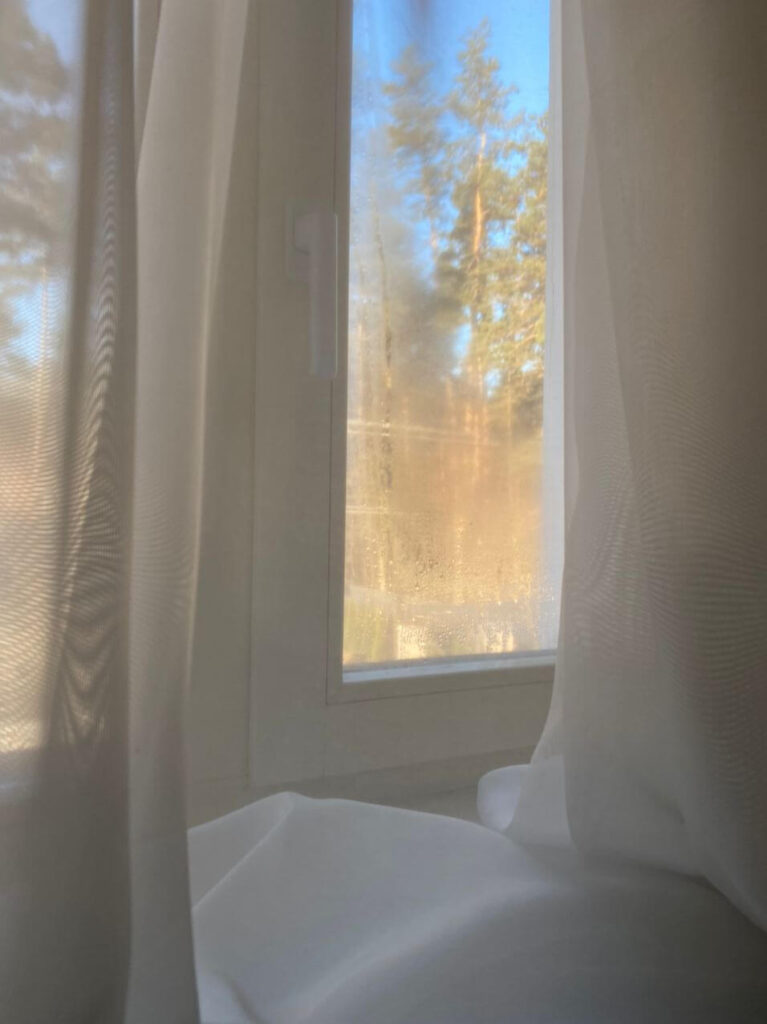Condensation. It is a common occurrence in many places and can be a familiar sight in and around the home. From cooking up a steamy feast in the kitchen, to the fogged-up bathroom mirror after a hot shower, condensation makes regular appearances throughout our day-to-day lives.

Do you sometimes find your windows covered with condensation; puddles on the windowsills and dampness in the corners of windows recesses?
In the worst cases of persistent damp from condensation build-up, moulds can form which can have harmful effects on our health. The owners of period properties and buildings with traditional timber-framed windows are usually familiar with these scenarios.
Simply, warm air can hold more moisture than colder air. When warm air with a high humidity level meets a colder surface, some of that moisture has to return to water: This is the condensation you see on your property’s different surfaces.
Because warmer air can hold a larger amount of water vapour, when that air is forced to cool down the vapour can no longer be held in the air and is released, once again, as water. Whether warm or cold, any air that is not well circulated/ ventilated while moisture levels build up will eventually reach the maximum level of moisture which it can retain. At this point – at 100% humidity – it has reached its saturation point (or “dew point”). Additional moisture entering this environment (whether from our cooking or from our breath, for example) will become water.
Hopefully, this helps to explain why you might wake up to find your bedroom window saturated with a covering of tiny water droplets! And why this happens more in the colder months when the temperature of the air indoors will drop further in temperature against the colder surfaces. There are a number of ways we can help reduce condensation. Having this basic understanding of condensation can help inform how you manage the different conditions within your own home.
What about when the condensation is not on the inside or the outside of our double glazing, but it is trapped in the middle – in between the panes? Why does this happen, and can we do anything to resolve this?

If you have trapped condensation, in most cases it is a sign that a seal has failed on your glazing unit. The type, quality and age of your double-glazing unit will factor into what has caused the problem and what can be done.
At Chameleon, we use premium Fineo glazing units which are guaranteed for 15 years.
Fineo’s double-glazing is vacuum sealed (rather than gas-filled like many modern glazing units). This ensures longer life, enhanced thermal properties and greater environmental benefits.
Eventually, time will wear down even the highest quality components. For lower-grade products, this deterioration and glazing failure can happen all too quickly! In other cases, the glass pane itself may be damaged or the central spacer may be faulty.
Typically, when the sealant material degrades and fails, the air-tight seal is broken which allows air to enter between the internal and external pane. With daily temperature fluctuations, condensation quickly forms and alerts us to this common problem.


For as long as the problem persists, your double-glazing will no longer be performing as it should. As well as being aesthetically unsightly and an impairment of your view, you will not be gaining the energy saving benefits which double-glazing is designed to offer. The warm air that you have paid to heat will not be as effectively retained as it should be. You may find that you need to increase your heating to maintain the same comfort levels as before the unit had failed.
What does this mean for you and your property? If you suspect that you have a failed glazing unit, what should you do?
Whilst repairs to some faulty double glazing units are not impossible, these are often short-term ‘fixes’ and do not guarantee that your glazing will return to its crisp, clear, condensation-free best.
The optimum solution is to professionally replace (and upgrade) the failed unit. Wherever it is possible, replacing failing units is more cost-effective in the long run. Our glazing retrofitting service ensures that the highest-quality, most durable double-glazing units are securely and precisely installed.
At Chameleon, we have years of restoration expertise and industry-leading knowledge on glazing solutions. When retrofitting glazing, we effectively undertake all preliminary repair work such as removing and repairing rotten sash window timber.
Damp timber frames and inadequate protection from the elements will decrease the life of the seals on your glazing. We securely fit premium vacuum-sealed units and complete the installation with a redecoration using premium paints; and replace old window putty with new. To learn more, browse our blog and service pages.
To arrange to resolve your sash double-glazing retrofitting and upgrade, contact Chameleon.